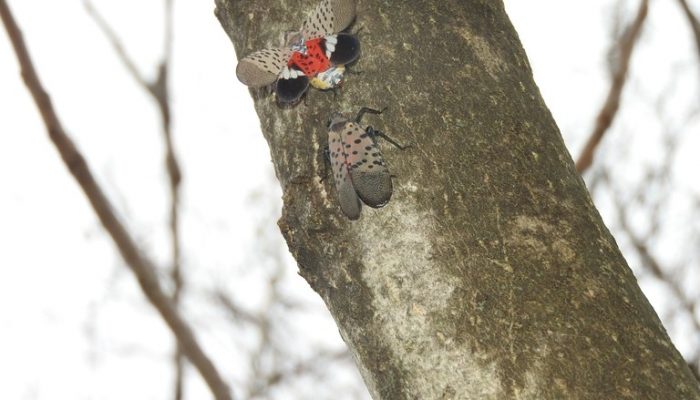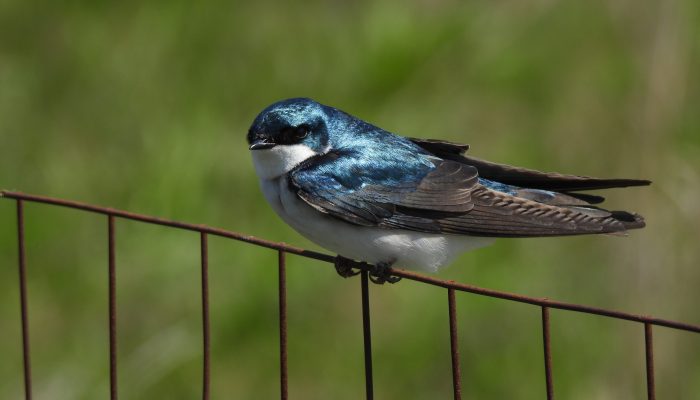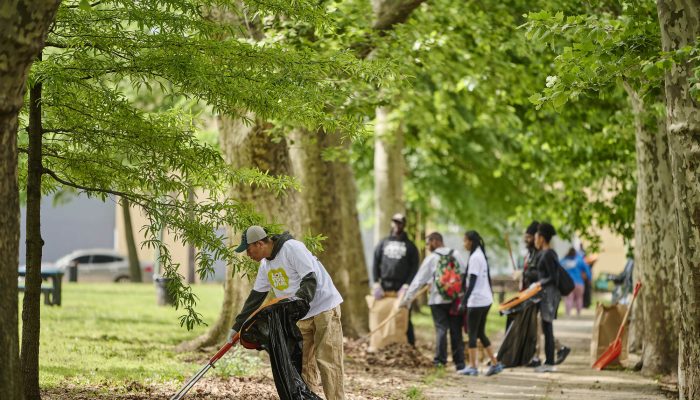By Melissa Romero for the Fairmount Park Conservancy
If you see a big, red X on trees in Philly’s parks—it’s a trap! “Trap trees” are part of Philadelphia Parks & Recreation’s battle against spotted lanternflies. These invasive insects made their way to Philadelphia over the past few years. They have the potential to damage forests and agricultural crops across the region.
Spotted lanternflies are native to Asia. They feed on more than 70 species of trees, including a variety of orchard trees. Their preferred hosts are the Tree of Heaven (Ailanthus altissima), black walnut trees, and hops. They attack by piercing a tree and feeding on its sap. They leave behind an oozing trail of sticky grayish or black matter on the tree.
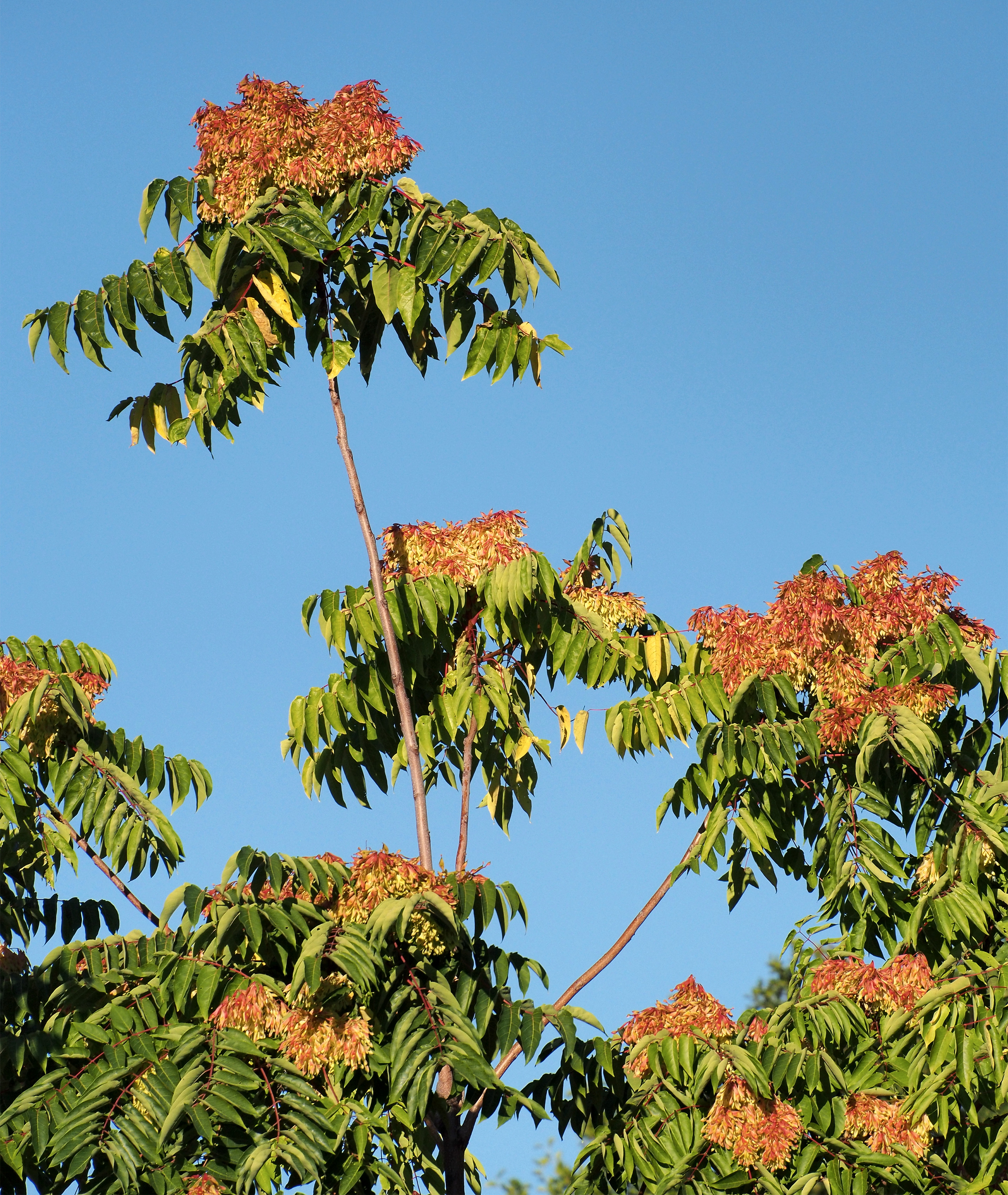
Spotted lanternflies prefer to host on the Tree of Heaven (Ailanthus altissima).
Photo courtesy of Wikimedia Commons.
The pests were first discovered in nearby Berks County in 2014. Since then, the United States Department of Agriculture (USDA) has coordinated with the Parks & Rec and Fairmount Park Conservancy Natural Lands team. The Natural Lands team is focusing on four parks:
- FDR Park in South Philly
- Pleasant Hill Park in the northeast
- Pennypack Park in the northeast
- Roxborough Reservoir in Northwest Philly.
The team works to manage and curb the spread of the spotted lanternfly at these parks. One of the reasons these sites were chosen is their proximity to transportation hubs. The goal is to reduce the spotted lanternflies’ ability to “hitch a ride” to another location via a car, bus, train, or airplane.
Management efforts include:
-
removal of some trees.
-
basal bark treatment of non-hazard trees in which an oil-soluble herbicide is applied directly to the bark.
-
creation of “trap trees.” Trees that the lanternfly likes to feed on will be treated with insecticide. This will kill the insects when they stop by for a meal. You’ll know it’s a “trap tree” because it will be marked with a large red and circled “X.”
Here’s how you can help efforts, courtesy of the Pennsylvania Department of Agriculture:
- This insect is easily moved if no one is looking. If you are in the quarantine area, please “Look Before You Leave.” Inspecting your vehicle, trailer, or any outdoor items before you move around or out of the quarantine is important. If possible, don’t park in tree lines and keep windows rolled up when you park your vehicle. Know the life stages of the insect and when to look for them.
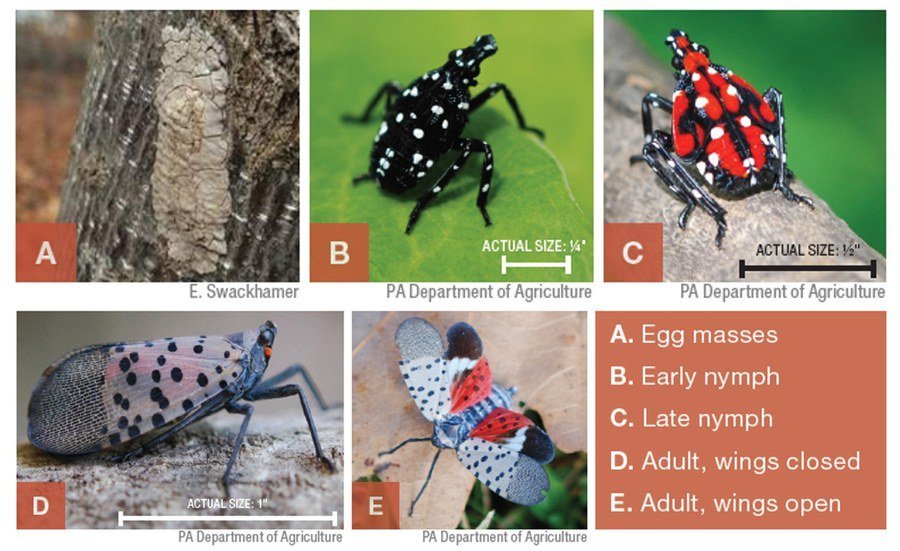
- Take control measures on your own property. Use these recommendations developed by Penn State Extension. Any effort you make in destroying the spotted lanternfly or its egg masses helps your property and community.
- Report sightings of the spotted lanternfly. All reports of SLF outside of the quarantine are taken seriously and will be investigated. Reports within the quarantine are registered in a database for USDA and the PA Department of Agriculture. The database is used to help determine properties for treatment. Treatment is based on location, risk, and available funds.
Please join the effort to control and prevent the spread of spotted lanternfly. We need everyone to protect their properties, communities, and the Commonwealth from this invasive insect that has the potential to change our landscape and quality of life.

